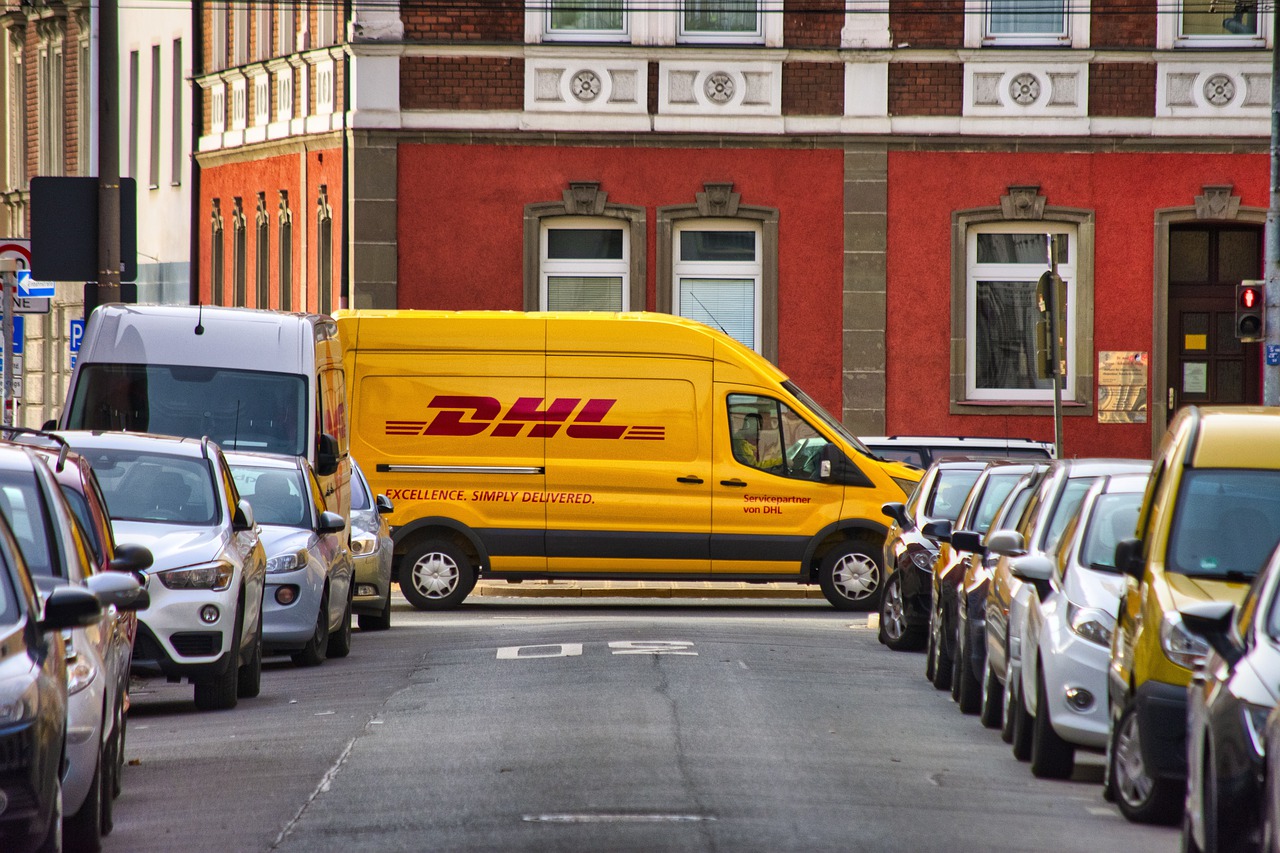Planning and managerial approaches of (un)loading bays for urban delivery vehicles

Share this Post
Global trends such as population growth, increasing urbanization and sustained economic growth of cities lead to increased freight traffic in urban areas. The pressure on inner-city areas, as a major destination for goods pick-up and delivery and where parking space is limited, is particularly high. Intense delivery activity in cities leads to problems that impair the quality of life of the city’s inhabitants, namely congestion, pollution, safety issues and noise. These issues need to be addressed in order to alleviate the negative impact of increasing demand, alongside the problem of insufficient dedicated parking facilities for commercial vehicles.
Introduction
Chronic shortage of parking spaces is a problem endemic to densely populated urban areas; it is exacerbated in historic city centers and business districts since the roads were not designed to handle large volumes of traffic, let alone provide extra space for on-street parking. As a result, drivers spend more time searching for suitable parking, or create even more congestion by double-parking. Both passenger and commercial vehicles drive high demand for parking facilities that invariably exceeds the scarce supply. Appropriate allocation of parking spaces designated for commercial vehicles is essential for alleviating environmental (e.g. air pollution), economic (e.g. loss of delivery reliability, higher delivery costs), and social (e.g. noise pollution) problems by reducing congestion, delays, and the incidence of illegal parking.
There are two main approaches to relieving competition for scarce dedicated parking facilities for freight (un)loading. One focuses on increasing parking availability through infrastructure improvements; the other – on influencing freight parking demand through policies and regulations to ensure more efficient use of the existing infrastructure as part of parking management. As an example of the first approach, policy makers would set laws and regulations for the building of adequate freight parking infrastructure in a city, such as the establishment of at least one (un)loading bay for every 100 m on city streets, as suggested in Paris. This approach, however, is difficult to implement in city centers due to the scarcity of available space. The second approach consists of implementing urban logistics policies and introducing regulations that foster sustainable logistics practices. Both approaches, freight infrastructure design and municipal logistics initiatives, rely on the availability of data and on data-driven models that can anticipate potential consequences and assist the decision-making process in terms of freight dedicated parking facility planning and management.
Litman (2016) defines parking management as “policies and programs that result in more efficient use of parking resources. Parking management includes a variety of specific strategies … [that if] appropriately applied can significantly reduce the number of parking spaces required in a particular situation, providing significant financial savings and various other benefits”. According to Nourinejad et al. (2016), the main planning and management approaches to commercial vehicle parking fall into the following categories: (1) time restrictions; (2) pricing strategies; (3) spatial arrangement of (un)loading bays; (4) parking enforcement; and (5) intelligent information and control systems, which in practice is often used in conjunction with parking payment technologies. Parking facilities for cargo bikes are included in these categories since delivery companies increasingly deploy electric cargo bikes in major urban areas. All categories are explained in detail in the following sections.
Time restrictions
Many municipal authorities address the challenge of conflicts over parking during peak hours by enacting time restrictions to shift freight deliveries to off-peak periods for passenger traffic, thereby separating commercial and passenger vehicles in urban areas temporally rather than spatially. Time restriction regulations tend to ether restrict vehicle access or stopping for (un)loading at certain times. Because they frequently appear in combination with other signage, these signs tend to be inconsistent, ambiguous and deceptive for delivery drivers. As a result, some delivery service providers have started to employ cargo bikes for deliveries, as cargo bikes are permitted in most parts of a city and parking time restrictions do not apply to them.
Pricing strategies
Pricing strategies are used to encourage faster turnover of both passenger and commercial vehicles at parking facilities, thus increasing parking space availability. Pricing strategies can be classified both spatially and temporally. Examples of the former include cordon-based pricing of road usage, area-based pricing schemes of infrastructure, distance-dependent pricing, and parking facility-based pricing. Public and legal acceptance of geographical demand-based pricing is generally difficult to obtain, and system costs are relatively high. Nevertheless, such charges have been implemented in a number of cities around the world, most notably in Singapore, London, and Stockholm, where this policy instrument has had positive short-, medium-, and long-term effects and has generated significant revenue for the cities.
In the case of temporal-based parking pricing, parking fees can be calculated in one of the following ways:
- Fixed-rate pricing per unit time: the parking fee charged for a specific unit of time remains constant, regardless of how long the vehicle remains parked at the spot.
- Progressive parking pricing: the parking fee per unit of time increases the longer the vehicle remains parked at the spot.
- Daily pricing: the vehicle can be parked for a fixed price for all or part of a day.
Additionally, parking fees may vary based on other factors that affect parking demand, such as:
- time of day: applying variable parking rates for specific ‘time windows’, based on parking demand patterns in the given geographic area.
- day of week: adjusting weekday and weekend rates based on relative demand for parking; and
- special event: imposing special charges during large events taking place in or near the target neighborhoods.
As freight delivery vehicle operators tend to avoid parking fees, temporal-based pricing strategies are an effective tool to encourage off-hour deliveries.
Spatial arrangement of (un)loading bays
In most cities, freight delivery vehicles either share available parking facilities with passenger vehicles or deliver on the road. An alternative possibility is creating dedicated parking spaces for freight vehicles. These can differ in size, number, position and usage. The city of Washington D.C., for instance, has increased the size of (un)loading bays for commercial vehicles from 40 to 100 feet in order to encourage more efficient freight delivery operations and reduce double-parking.
Apart of increasing the size of (un)loading bays, alternative spatial arrangements can also lead to more efficient utilization of parking infrastructure. Dezi, Dondi & Sangiorgi (2010) suggest optimal spatial arrangement of (un)loading bays for different types of commercial vehicles commonly used for deliveries in urban areas. A commercial vehicle that requires a parking space of 7,0 m in length and 2,5 m in width can be parked in three different configurations of (un)loading bays to make use of available space: parallel, 30° or 90°.
Cargo bikes have specific parking requirements, depending on the model used by the delivery providers. In most cases, they do not fit into regular bike parking spaces as they require more room. In practice, cargo bikes are frequently parked on sidewalks that are sufficiently broad, which makes them relatively easy to use in urban settings. Nevertheless, it is preferable to provide parking facilities that allow securing the cargo bike to a fixed object for safety, particularly when parking for longer periods of time. Apart from providing the parking facility itself, adequate signage is required. For instance, the federal transport ministry in Germany has recently introduced a unique sign for dedicated cargo bike parking facilities.
Parking enforcement
Commercial vehicles are regularly subjected to parking enforcement due to their heavy presence in urban areas during pick-ups/deliveries, and their recurrent involvement in parking violations. An additional task for law enforcement is deterring non-commercial vehicles from occupying (un)loading bays. Parking enforcement has three main components: detection technology, level of enforcement, and citation fine. The methods for monitoring illegally parked commercial vehicles are either human surveillance (where officers patrol the area on foot, by bicycle or by car) or automated detection such as license plate recognition software and cameras. The level of enforcement refers to the density of the enforcement units (e.g. cameras or on-foot officers) in the area; citation fine refers to the penalty imposed for illegal parking.
Physical means can also be used to enforce delivery regulations. (Un)loading activity systems can make use of road design, or obstacles like gates or permanent or retractable bollards, to impede commercial vehicle access to certain areas. Alternatively, technology such as parking space sensors/bollard can be used to limit access to approved vehicles only.
Intelligent information and control systems
The application of pricing strategies is one way of managing parking demand to avoid either vacancies or overcrowding in specific areas. The use of information systems is another way to optimize parking facility utilization, and thus to minimise illegal parking, waiting times and/or search traffic for parking options. The use of information systems can be combined with intelligent pricing for maximum efficacy.
A pilot study in Washington D.C., for example, enabled truck drivers to reserve remotely monitored parking spaces by cell phone in advance of their arrival. The results show that advance booking of (un)loading bays, combined with the right pricing strategies, can improve freight delivery behavior and reduce parking issues, as long as delivery drivers arrive in time for bookings.
Advances in parking technology provide substantial opportunities for analyzing and sharing data in order to use the existing infrastructure as efficiently as possible. To this end, cities tend to use overlapping technologies such as parking meters, pay-by-phone and license plate recognition technology, which can improve data availability and facilitate the integration process of parking payment and enforcement systems. In addition, the integration of mobile devices into the reservation and payment process of (un)loading bays leads to a reduction of problems associated with commercial vehicle parking.
Conclusion
This explainer has presented examples of commercial vehicle parking planning and management strategies implemented in various locations around the world. While these are different in nature, they all share the common objective of finding a viable solution to delivery parking issues in urban areas. Of the available policy options, urban freight transport research underscores the importance of (un)loading related policies; these have frequently been overlooked in many major cities, where no comprehensive guidelines and/or parking demand strategies for handling commercial traffic have been implemented. Therefore, a demand-oriented and environmentally friendly approach to parking space policy and practice is essential to future-aligned integrated transport policy and planning, since demand for parking facilities, particularly in city centers, is only set to increase further.
Further readings
Chen, Q., Conway, A. and Cheng, J. (2017). ‘Parking for residential delivery in New York City: Regulations and behavior‘, Transport Policy, 54: 53–60.
Dalla Chiara, G. and Cheah, L. (2017). ‘Data stories from urban loading bays‘, European Transport Research Review, 9/4.
Dezi, G., Dondi, G. and Sangiorgi, C. (2010). ‘Urban freight transport in Bologna: Planning commercial vehicle loading/unloading zones‘, Procedia – Social and Behavioral Sciences, 2/3: 5990–6001.
Holguín-Veras, J., Amaya, J., Encarnacion, T., Kyle, S. and Wojtowicz, J. (2016). Impacts of Freight Parking Policies in Urban Areas: The Case of New York City.
Jaller, M., Holguín-Veras, J. and Hodge, S. D. (2013). ‘Parking in the City‘, Transportation Research Record: Journal of the Transportation Research Board, 2379/1: 46–56.
Litman, T. (2016) Parking Management: Strategies, Evaluation and Planning. Victoria.
Marcucci, E., Gatta, V. and Scaccia, L. (2015). ‘Urban freight, parking and pricing policies: An evaluation from a transport providers’ perspective‘, Transportation Research Part A: Policy and Practice, 74: 239–49.
McLeod, F. and Cherrett, T. (2011). ‘Loading bay booking and control for urban freight‘, International Journal of Logistics Research and Applications, 14/6: 385–97.
Nourinejad, M. and Roorda, M. J. (2016). ‘Parking enforcement policies for commercial vehicles‘, Transportation Research Part A: Policy and Practice, 102/1: 33–50.
Nourinejad, M., Wenneman, A., Habib, K. N. and Roorda, M. J. (2014). ‘Truck parking in urban areas: Application of choice modelling within traffic microsimulation‘, Transportation Research Part A: Policy and Practice.
The opinions expressed in this text are solely that of the author/s and do not necessarily reflect the views of IPPI and/or its partners.
Share this Post

The Global Story of Election Interference
Authors: Olaf Boehnke and Carlo Zensus Ever since citizens have been communicating online with each other via emails,…

No, that’s not what a trade deficit means – and that’s not how you calculate other nations’ tariffs
Peter Draper, University of Adelaide and Vutha Hing, University of Adelaide On April 2, United States President Donald…

"Disinformation is not just any piece of “fake news” – It's the deliberate dissemination of false or misleading information"
Disinfo Talks is an interview series with experts that tackle the challenge of disinformation through different prisms. Our talks…
